What is Regenerative Tourism
New Zealand has a history of sustainable tourism with many businesses making operational choices towards sustainability. So, what is different about the idea of Regenerative Tourism? Just like there are many ways of describing more sustainable forms of agriculture, for example organic farming or permaculture, there are different approaches in tourism. Examples include responsible tourism, ethical tourism or sustainable tourism. Sustainable tourism has been the most widely accepted concept, and it is firmly linked to the UN Sustainable Development Goals. Ultimately, the goal of operating in a way that does not compromise the opportunities of future generations (i.e. following the 1987 Brundtland Report), is not so different from the new paradigm of regenerative economies, or more specifically regenerative tourism. In practice, however, sustainable tourism initiatives have often been based on technological approaches with the aim to maximise efficiency. For example, a hotel might install a new air conditioning chiller to save energy, or a business introduces recycling or equal-employment measures to deliver on some environmental performance indicators. The focus is typically quite singular and restricted to the boundaries of one organisation. It follows the principle of minimising harm or negative impact, and most tourism certification schemes take this approach. Of course, if everyone progressed on sustainable tourism, we would improve collectively towards better outcomes.
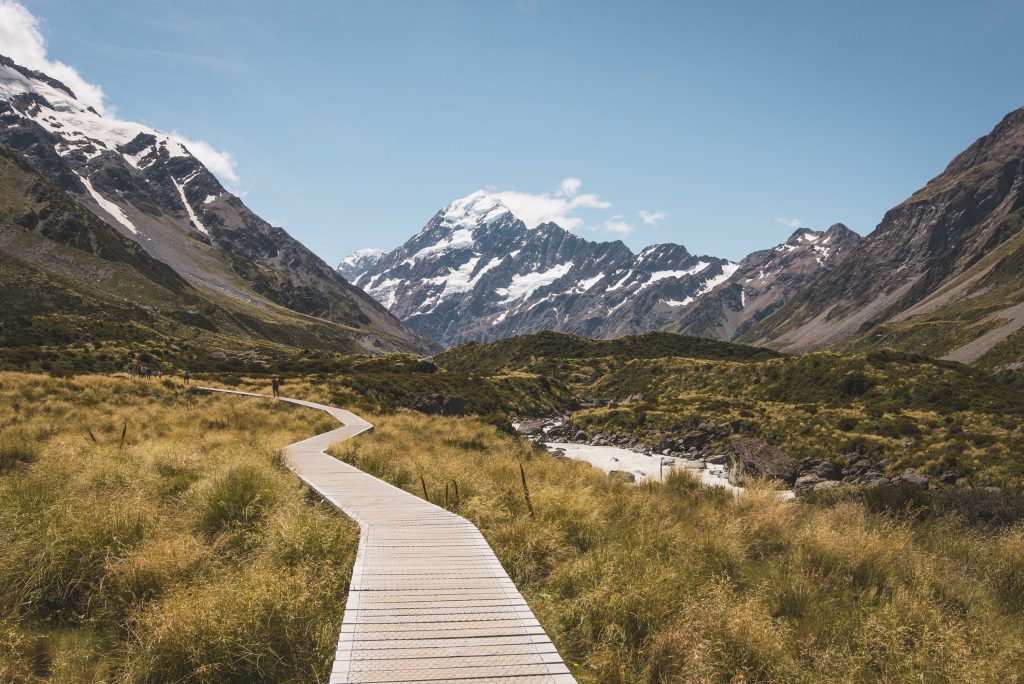
It is now understood, however, that this reductionist and narrowly conceptualised approach is not enough. The pressures of the last five years in particular have shown that tourism growth, even with some ‘sustainable management’ can result in more ‘bad than good’, at least in many of the popular destinations (e.g. community resentment, see Mood of the Nation). A more profound philosophy and guiding principles are required. The very basic underpinning of regenerative tourism is that it is understood to occur within an ecosystem of natural, social and cultural elements and interactions. Taking a holistic approach is essential in understanding positive effects (e.g. healing) as well as unintended consequences (e.g. degradation). Everything is connected, and tourism that does not respect or understand feedback loops in the system in which it operates will ultimately erode capital – and with that the wellbeing and health of the system. Regenerative tourism, in contrast, is designed in a way that builds capital and ‘gives back’ to the land and people. This can happen in multiple ways – but system health needs to be the ultimate outcome (see more on regenerative or conscious travel on Anna Pollock’s page).
Shifting markets
The current Covid-19 pandemic has left us with closed borders and a sudden stop in international arrivals (e.g. see Statistics NZ, arrivals lowest in 61 years). The economic damage is substantial, and unemployment, in particular in the tourism and hospitality industries, has increased. Thankfully, the domestic tourism market has recovered after the lock-down in April and May (better than in most countries around the world). This presents multiple opportunities, including a (enforced) shift for operators to reconsider their offerings, and how to add value so that domestic visitors can enjoy ‘Destination NZ’ whilst generating economic return. This is particularly important in regional destinations and those places that suffer the most from the loss of international tourism (see Tourism New Zealand’s ‘do something new this winter’ campaign).
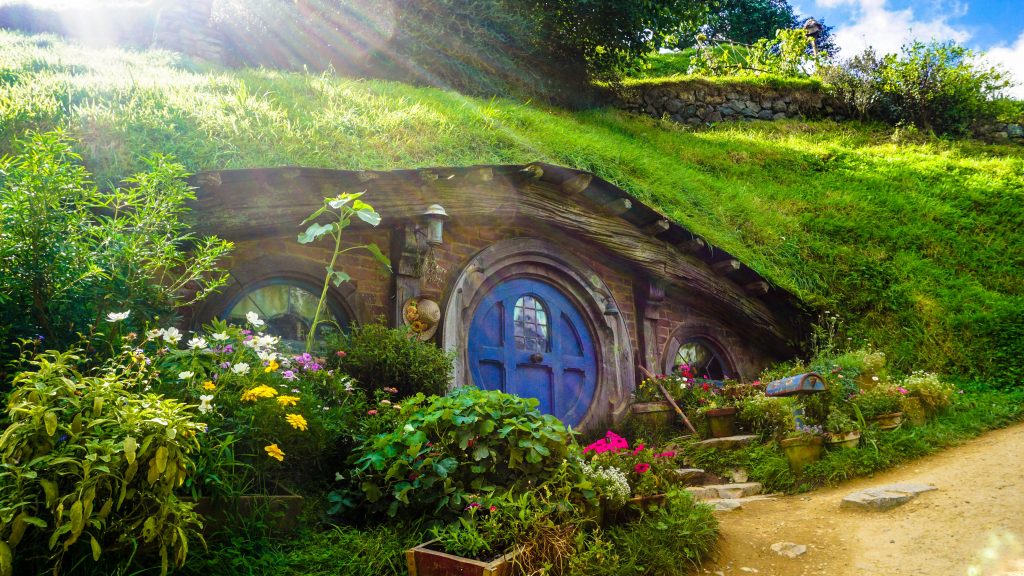
Hobbiton in Matamata
A shift towards more local, and maybe ‘slower travel’, brings major benefits for reducing the carbon footprint of tourism. Consider this: The carbon footprint of a return flight to Australia is 570 kg of CO2. The footprint of a visitor from Europe is five times that, namely 2920 kg of CO2. If the future foresees less long-haul travel (there are several conceivable reasons why the new world of travel will be permanently different from the pre-Covid one), New Zealand might have to shift towards domestic, Trans-Tasman and maybe some Asian markets. Overall, the carbon emissions from international air travel have always been the Achilles heel of tourism, and in a truly regenerative world this has to be addressed. (There are several options, including downsizing, carbon offsetting (only a short-term band aid), and investment into alternative aviation fuels (expensive, and leading to downsizing as well). No doubt, the international air travel component of New Zealand tourism is a key challenge that remains at the forefront of discussions on sustainable or regenerative tourism alike.
Importantly, there are 3.1 million outbound trips by New Zealanders going overseas every year. In 2020, most of these will not happen, leading to further reductions in carbon. In the future, for every New Zealander who chooses to holiday at home (and replace the need for an international arrival), the carbon benefit is doubled. How this will affect our balance of trade and export earnings requires more thought, but from a resilience perspective, reducing the dependence on carbon intensive air travel is important. In that sense, air travel could be compared to the fertiliser used in agriculture; an external input that would need to be reduced to become more sustainable.
Is Regenerative Tourism already happening in New Zealand?
There are many great examples of operators that already go beyond simple in-house ‘sustainability fixes’. For example, and as advocated in the Tourism Industry Aotearoa Sustainability Commitment, many tourism operators have become involved in predator control programs to support the Predator Free 2050 Vision, or they engage in other forms of nature restoration and tree planting (e.g. Ziptrek Ecotours in Queenstown). There are other excellent examples where tourism businesses support social causes, including through specifically setting up social enterprises such as Kohutapu Lodge in Murupara. Kohutapu Lodge offers local employment, supports schools with food provisions and acts as a nucleus for other entrepreneurial activities in the region. The introduction of the Te Reo language pin and bilingual inflight quiz by Air New Zealand supported revival of Māori language and cultural appreciation more broadly. It can be argued that in all of the above examples, tourism is making some contribution towards a thriving environment, community and culture.

Trent Yeo from Ziptrek Ecotours in Queenstown
At a larger scale, the Government has introduced an International Visitor Levy ($35 per arrival) which largely funds conservation projects. Whilst the levy is now essentially on hold due to lack of arrivals, the fundamental idea resonates well with regenerative tourism. It also aligns with the initiative of the Tiaki Promise, a code for travellers to respect and cherish the New Zealand environment and people. The Tiaki Promise could and should be extended to the hosts and, indeed, every New Zealander to take seriously the principle of kaitiakitanga that everyone in this country can contribute to.
Much of what we can see ‘on the ground’ is driven by leading businesses who are passionate about the place in which they operate. It is important that policy supports these efforts, but also ensures that the ‘lagging end’ is regulated or incentivised to increase their efforts. Mandatory carbon reporting schemes (e.g. in the United Kingdom or France) might be one policy that would lead to reduced impacts, or enforced technological change might be another. An example is Norway’s policy that fjords become zero emissions by 2026, forcing cruise ships to drastically change their practices. Ultimately, though, regenerative tourism happens at the community level and needs to go beyond such top-down regulatory interventions. Empowering communities to make decisions, providing know-how and sound information (including data on tourism), and fostering cross-industry networks might be avenues to lead to more regenerative outcomes.
Value of tourism
Just like in agriculture and forestry, we need to move away from the notion of mass production and economies of scale to a focus on higher value products. Less could be more. Importantly, in the tourism context value is not necessarily just measured in dollar terms. Strengthening of social fabrics due to tourism activity in rural environments, diversification of incomes (e.g. farm stays or glamping), integration of local economies (e.g. food trails and farmer markets), restored environments, and so forth, could all be measures of success in a thriving tourism sector. Staying longer in one place (rather than ticking off ‘iconic places’) might be one strategy to reduce impacts and at the same time increase the value of experiences. Creating emotional attachment to places via memorable experiences is one important factor in driving not only return visitation but also to foster care and attachment to a particular place. More research is needed into how tourism can contribute to local and national well-being and prosperity.
Covid-19 provides a unique opportunity to reassess how much tourism New Zealand wants and what form it should take. The Government has set up a Future Tourism Taskforce to address some of the key questions and challenges. The core idea must be to move away from an extractive model to a regenerative one. How this can be achieved will be a learning process, one that New Zealand might be leading in the world as several other destinations grapple with the same issues. Drawing on Te Ao Māori philosophy and Mātauranga Māori (traditional concepts of knowledge and knowing) will provide a unique advantage to New Zealand in developing an alternative model for tourism.
Where to from here?
This current crisis provides an opportunity to rethink. It also stimulates (or imposes) new approaches that lead to different alliances and networks, shifts in supply and demand, and the way we do business. The movement of regenerative tourism would benefit from close cooperation with similar initiatives around regenerative agriculture or forestry, or indeed regenerative economies more broadly (e.g. see urban regeneration). After all, all these activities are inter-linked within the place they happen and depend on each other’s efforts to contribute to regeneration.
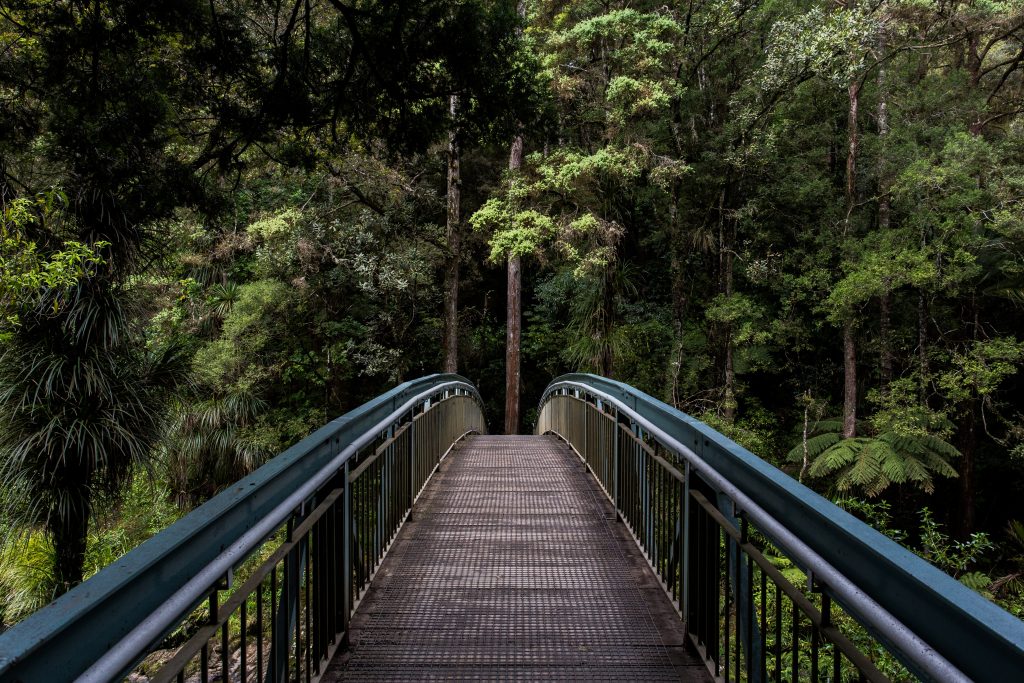
Connecting thinking with practice is essential. So-called shoulder-to-the-wheel actions need to be supported by a range of mechanisms. These could be Government-led incentive programs (e.g. for innovation), they could take the form of information and education campaigns, or business-to-business networks. The Government’s investment into Jobs for Nature provides an opportunity to ‘pick up learnings’ from the massive investments made, including how tourism operators involved in these programs might change their views on nature, how they might translate their restoration experiences into permanent business value propositions, and how alliances created as part of the program might outlive the three-year investment timeframe to provide permanent networks.
Given that New Zealand’s focus will be on domestic and closer markets in the near to medium-term future, now is the time to rethink ‘value’ and ‘product’. Developing new opportunities for local travellers might present long-term shifts in the type of tourism we offer. For example, local trails (heritage, food, other types of special interest activities) will slow down travel, especially as they might be offered as walking or biking activities. Investment into local, small-scale but unique experiences might have multi-dimensional benefits. Measuring success will require more research (a call to all academics in tourism) and better data, but just like precision farming, the investment is likely to pay off as tourism activity will occur with more purpose and ‘by design’ rather than as a result of churn and volume.
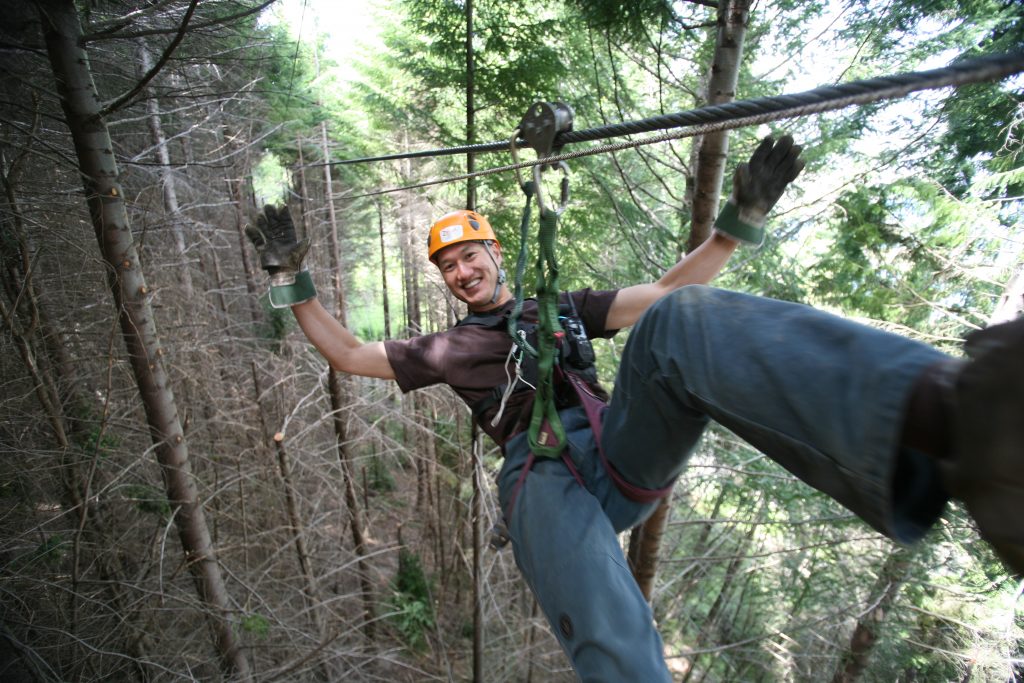
Trent Yeo from Ziptrek Ecotours Queenstown
See Regenerative Tourism on Pure Advantage TV

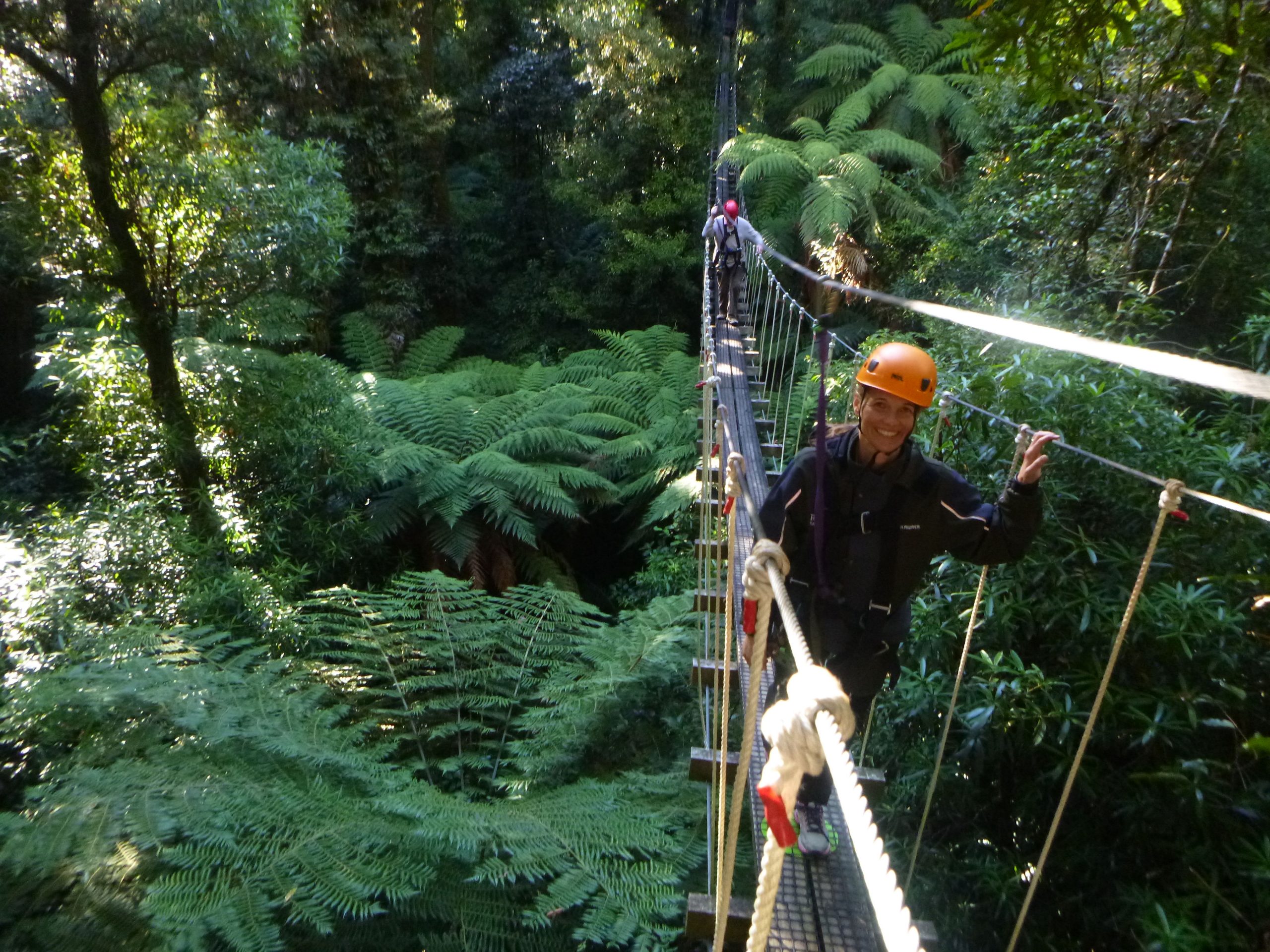


Leave a comment